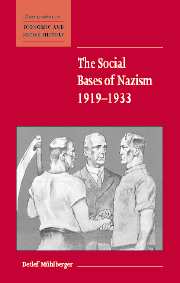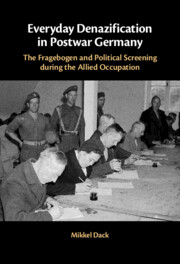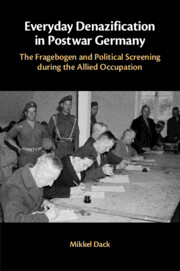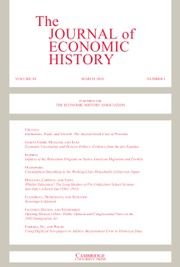The Social Bases of Nazism, 1919–1933
This latest addition to the New Studies in Economic and Social History series sheds fascinating light on an essential aspect of the history of Nazism. The social background of the supporters of Nazism has been the subject of intense debate since the early 1930s. Was the Nazi party a predominantly middle-class party or a people's party? Detlef Mühlberger provides a comprehensive summary of the answer to this question, based on extensive sociological and psephological evidence. The data support the claim made by the Nazis in the 1920s and early 1930s that their party was a Volkspartei able to mobilise support from all sections of German society. Lucidly written and clearly illustrated with numerous tables, this book will be essential reading for all those interested in modern German history.
- The only up-to-date and comprehensive account in English of the social bases of Nazism
- Deals with both the membership and electorate of the Nazi movement
- Essential empirical data summarised in numerous tables
Reviews & endorsements
"...this book is an outstanding survey of the state of the literature. It is an ideal text for an upper-division course on National Socialism or for graduate students seeking a brief overview of the terms of the debate."
- H-German, Benjamin Lapp, Department of History, Montclair State University
"...detailed and elegant ... very useful for students at all levels.... His summary and elucidation of existing research is comprehensive and complete."
German Studies Review
Product details
February 2012Adobe eBook Reader
9781139200226
0 pages
0kg
4 tables
This ISBN is for an eBook version which is distributed on our behalf by a third party.
Table of Contents
- 1. Introduction
- 2. Historiographic survey
- 3. Methodological problems
- 4. The social characteristics of the Nazi party in its formative years, 1919–1923
- 5. The social characteristics of the membership and leadership of the Nazi party, 1925–1933
- 6. The social characteristics of the membership and leadership of Nazi specialist organisations
- 7. The social geometry of the Nazi electorate, 1928–1933
- 8. Conclusion.










